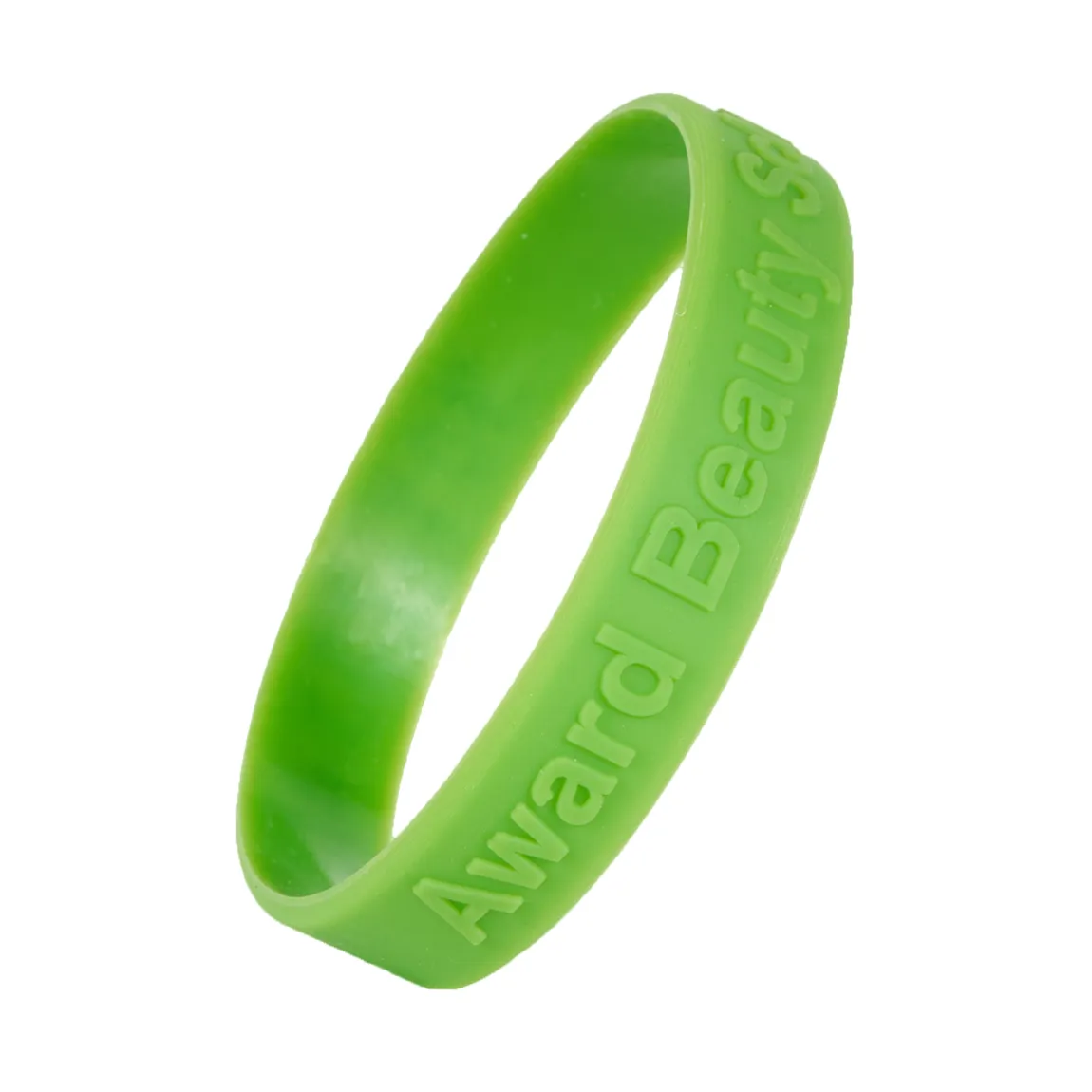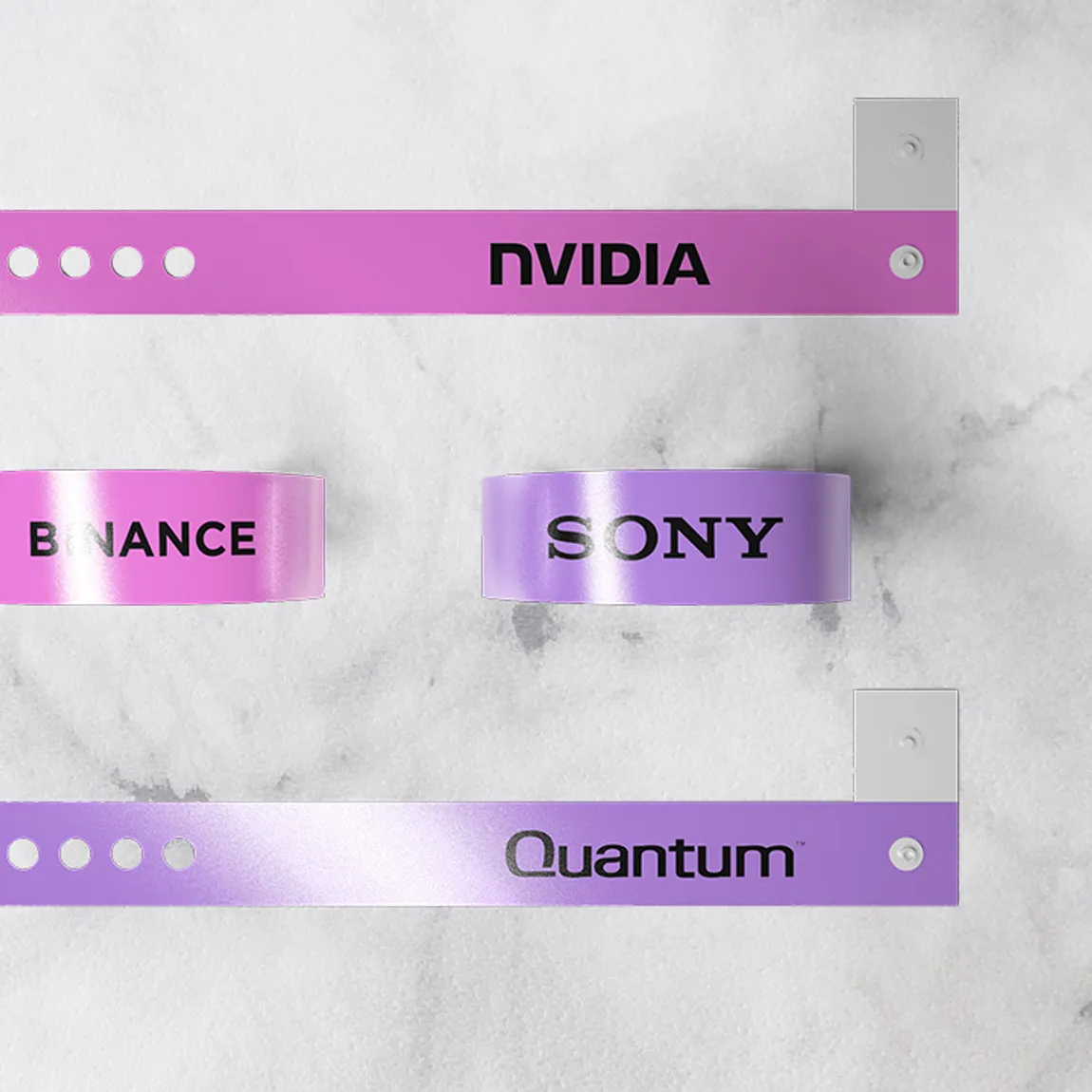When choosing event wristbands for events, promotions, or personal use, understanding the several differences between vinyl and silicone options is crucial. Each material offers unique benefits and features that cater to different needs and preferences.
This article will help you make an informed decision by exploring the key differences between vinyl and silicone bracelets, including durability, design options, cost, and environmental impact.
How Do Vinyl and Silicone Wristbands Differ in Terms of Durability?
Vinyl and silicone wristbands differ significantly in durability, influencing their suitability for various applications.
Vinyl bands are known for their robust construction, making them highly resistant to wear and tear. This exceptional durability is attributed to the material’s inherent strength, which allows it to withstand harsh conditions, including exposure to water and sunlight, without degrading quickly.
Vinyl bands are extremely durable and waterproof, making them ideal for single-day events or when the wristband needs to remain intact for an extended period. They are often chosen for crowd control, increasing security and providing reliable event entry wristband solutions.
In contrast, while durable, silicone bracelets offer a different type of resilience.
Silicone is a flexible material that can endure stretching and bending without losing shape or integrity. This flexibility ensures that silicone wristbands are comfortable to wear, even for prolonged or multi-day use. Due to their durability and reusable features, silicone bracelets are excellent souvenirs.
However, a silicone wristband may not be as resistant to environmental factors such as extreme temperatures or sharp objects.
To compare the durability of vinyl and silicone wristbands, consider the following factors:
Resistance to Environmental Conditions
- • Vinyl: High resistance to water, UV rays, and general wear. Often water resistant or waterproof.
- • Silicone: Moderate resistance; may degrade under extreme conditions.
Lifespan
- • Vinyl: Typically longer-lasting in harsh environments, suitable for extended use.
- • Silicone: Durable for everyday use but may not last as long in challenging conditions.
Strength and Flexibility
- • Vinyl: Strong and rigid, less flexible. Often featuring a locking snap closure for added security.
- • Silicone: Flexible and stretchable, less rigid.
Understanding these differences can help in selecting the appropriate wristband material based on the specific needs of an event or application.
Are There Any Differences in Flexibility and Comfort?
Flexibility and comfort are crucial factors when considering wristband types. Vinyl and silicone wristbands offer distinct characteristics in these areas.
Flexibility
- • Silicone Wristbands: Known for their high flexibility, silicone wristbands can easily stretch and return to their original shape. This elasticity makes them suitable for various wrist sizes and ensures a snug fit and a unique look without feeling restrictive.
- • Vinyl Wristbands: While durable, vinyl wristbands are less flexible than silicone. They are designed to maintain their shape and are often used for secure, tamper-proof applications. This rigidity can make them less adaptable to different wrist sizes.
Comfort
- • Silicone Wristbands: Silicone's soft, rubber-like texture provides a comfortable wearing experience, even for extended periods. It is lightweight and gentle on the skin, reducing the risk of skin agitation for guests.
- • Vinyl Wristbands: Vinyl wristbands are typically more rigid and may feel less comfortable over long durations. They are often secured with a snap closure, which can sometimes cause discomfort if not adjusted properly.
Silicone wristbands are generally more flexible and comfortable, making them ideal for situations where prolonged wear is expected. Vinyl wristbands, while less flexible, offer a secure fit and are often chosen for their durability and tamper-proof qualities.
What Are the Color and Style Options Available for Each Type?
Vinyl and silicone wristbands offer various color and style options, catering to diverse preferences and event themes. Understanding these options can help you select the most suitable wristband.
Vinyl wristbands are available in many solid colors, often including vibrant and neon shades. They can also feature patterns such as stripes or checks, providing a visually striking appearance. They are typically glossy, which enhances their visibility and appeal.
Additionally, they can be produced with holographic or metallic finishes, adding a unique touch to their design.
Silicone wristbands offer extensive customization in terms of color blending. They can be manufactured in solid colors or with a swirl effect, where multiple colors are mixed to create a marbled look.
Silicone wristbands can also be segmented, with distinct color blocks along the band. This flexibility in color design allows for creative expression and alignment with specific branding or event themes.
Both vinyl and silicone wristbands can be customized with text or logos in many colors and unique designs. Vinyl wristbands often use screen printing to add designs, which is effective for simple, bold graphics. Silicone wristbands can be debossed, embossed, or printed, offering various textural options.
Debossing involves engraving the design into the silicone bracelet, while embossing raises the design above the band's surface. Printing on silicone allows for detailed and colorful designs, making it suitable for intricate logos or messages.
|
Event-Specific Coding: Use colored vinyl wristbands to indicate tiers, such as VIP access, meal plans, or age groups, quickly. |
Can Both Vinyl and Silicone Wristbands Be Customized?
Both vinyl and silicone offer a range of customization options, allowing them to be tailored to specific needs and preferences.
Here are the key customization features available for each type:
Vinyl Wristbands
- • Printing Techniques: Vinyl wristbands can be customized using screen printing or digital printing, allowing detailed logos, text, and images to be applied directly onto the surface.
- • Embossing and Debossing: While less common for vinyl, some manufacturers offer embossing or debossing options, where designs are raised or recessed into the material.
- • Attachments and Add-ons: Vinyl wristbands can include features such as snap closures, RFID tags, or holographic elements for added functionality and security.
Silicone Wristbands
- • Color Fill and Swirl Effects: Custom silicone wristbands can be produced in various colors, including solid, segmented, or swirled patterns, providing a vibrant and eye-catching appearance.
- • Embossing and Debossing: Silicone is particularly well-suited for embossing and debossing, allowing intricate designs and text to be integrated into the band.
- • Glow-in-the-Dark and UV-Reactive Options: Special materials can make silicone wristbands that glow in the dark or change color under UV light, adding a unique visual element.
Both types of wristbands can be customized to meet specific branding or event requirements, making them versatile options for a wide range of applications. The choice between vinyl and silicone often depends on the desired aesthetic, functionality, and budget considerations.
Are Vinyl or Silicone Wristbands More Eco-Friendly?
Vinyl and silicone wristbands each have distinct environmental impacts that are important to consider when choosing between them. Understanding these differences can help make an informed decision that aligns with ecological values.
Vinyl Wristbands
- • Material Composition: Vinyl wristbands are made from polyvinyl chloride (PVC), a type of plastic derived from petroleum. The production process may involve the release of certain chemicals, which can impact the environment.
- • Degradability: Vinyl is not biodegradable, meaning it does not break down naturally in the environment. If not properly disposed of, this can lead to long-term waste issues.
- • Recycling Challenges: Due to PVC's complex chemical structure, recycling vinyl can be difficult. Specialized facilities are required to process and recycle vinyl products, which are not widely available.
Silicone Wristbands
- • Material Composition: Silicone is a synthetic rubber made from silicon, oxygen, carbon, and hydrogen. It is considered more environmentally friendly than many plastics because it is derived from silica, a natural resource.
- • Degradability: While silicone is not biodegradable, it is more durable and long-lasting, which can reduce the frequency of replacement and overall waste.
- • Recycling Options: Silicone can be recycled, but it requires specialized facilities like vinyl. However, silicone's inert nature means it does not leach harmful chemicals into the environment, making it a safer option for disposal.
When considering wristband eco-friendliness, weighing the environmental impact of production, the potential for recycling, and the long-term effects of disposal is essential.
While neither material is perfect, silicone wristbands generally offer a more environmentally conscious choice due to their inert nature and longer lifespan.
Decide the Best Wristband for Your Event
Choosing between vinyl and silicone wristbands depends on your specific needs. Vinyl wristbands offer exceptional durability and are often more cost-effective for short-term events. In contrast, silicone wristbands are comfortably worn, even for up to two weeks, making them a versatile choice.
Both materials offer customization options but differ in environmental impact and recycling possibilities. Remember to evaluate factors such as wrist size, skin sensitivity, and the overall quality of the product to ensure you choose the best wristbands for your specific needs.
When deciding, consider your event type, budget, and environmental priorities. Whether you opt for vinyl or silicone—or even other wristband types such as cloth wristbands, Tyvek wristbands, or plastic wristbands—each option has its strengths regarding security, style, and guest experience.
Don’t forget that you can customize each wristband type to suit your event’s unique features and branding requirements!

/filters:quality(80)/fit-in/630x380/blog/image-1736163141.png)


